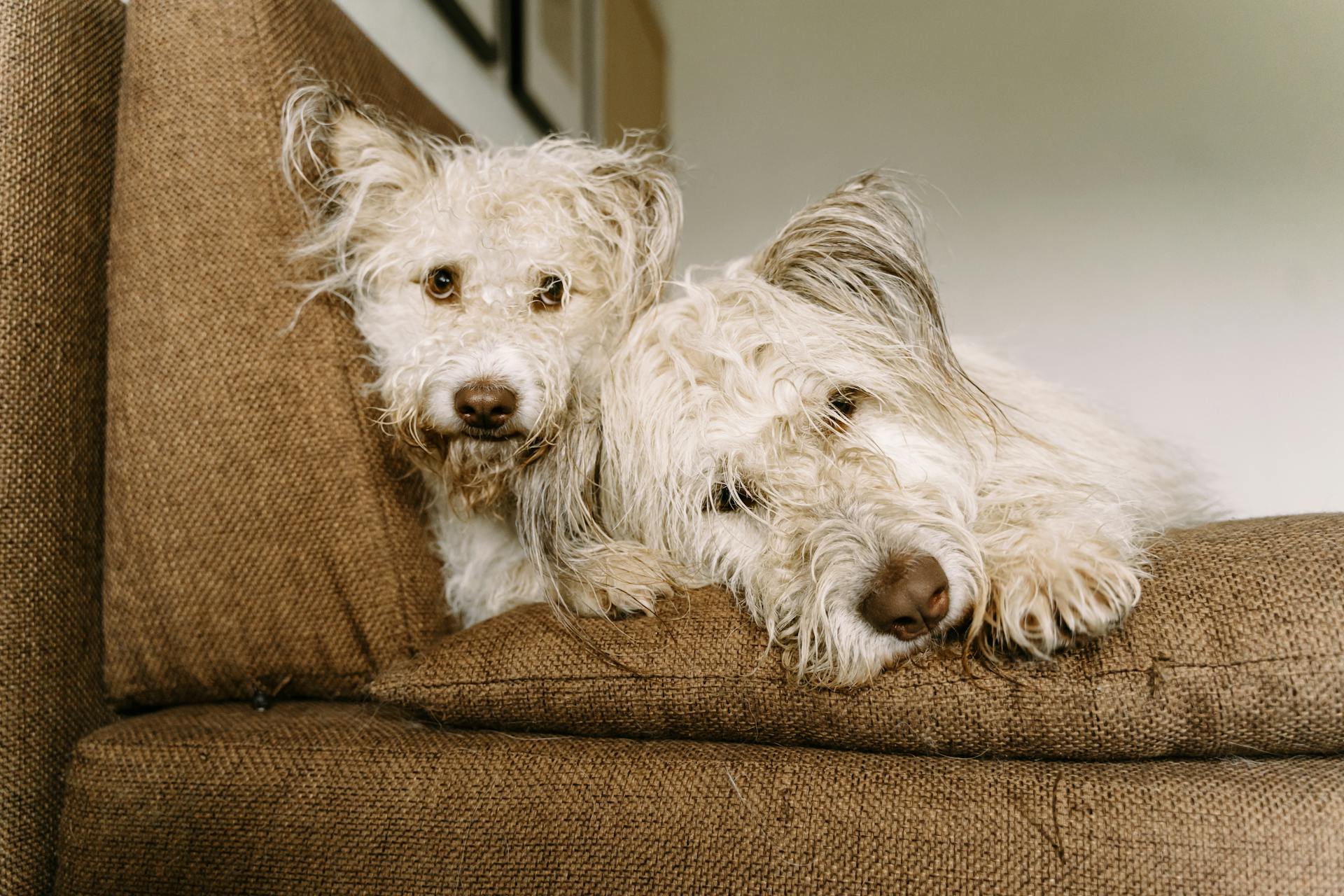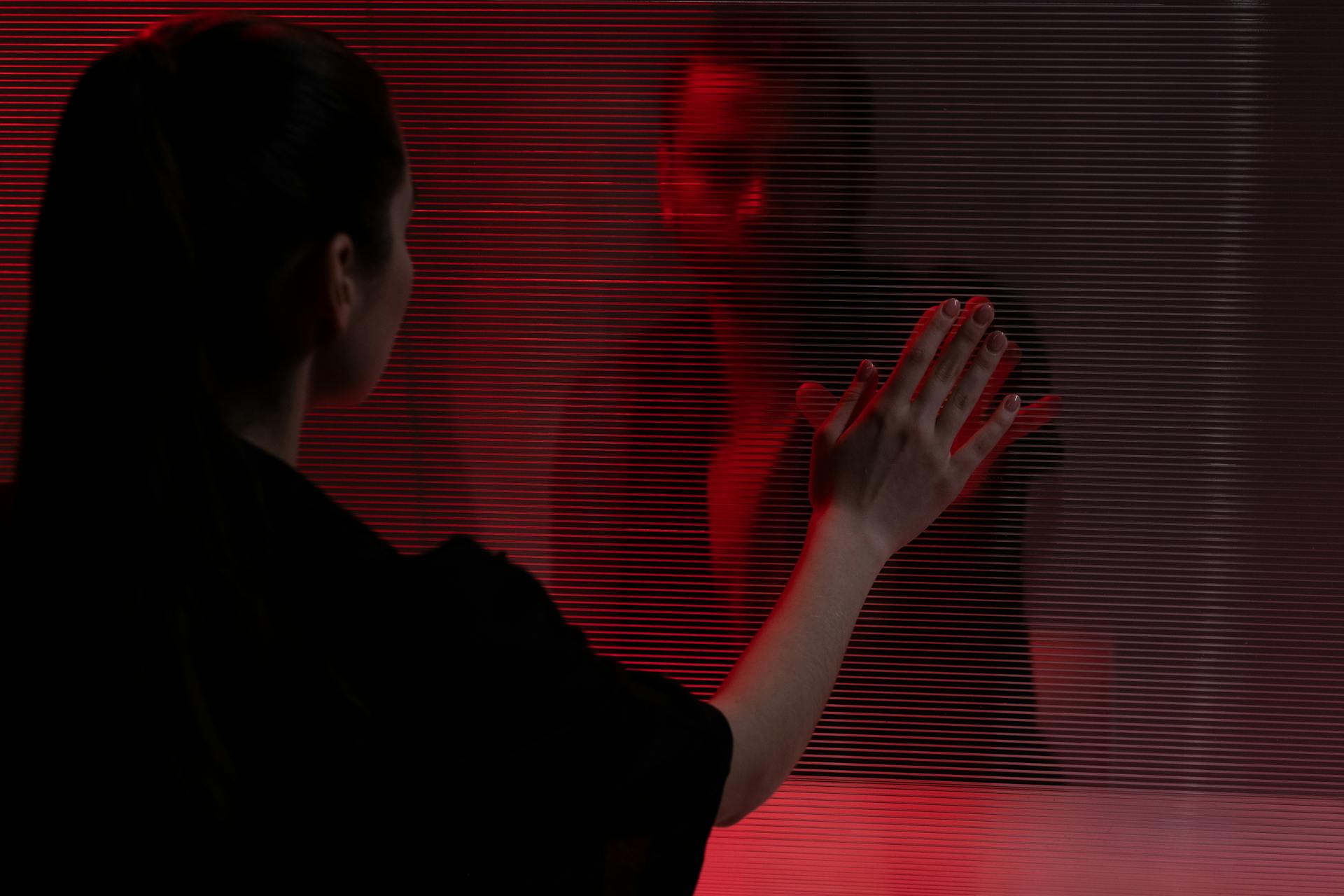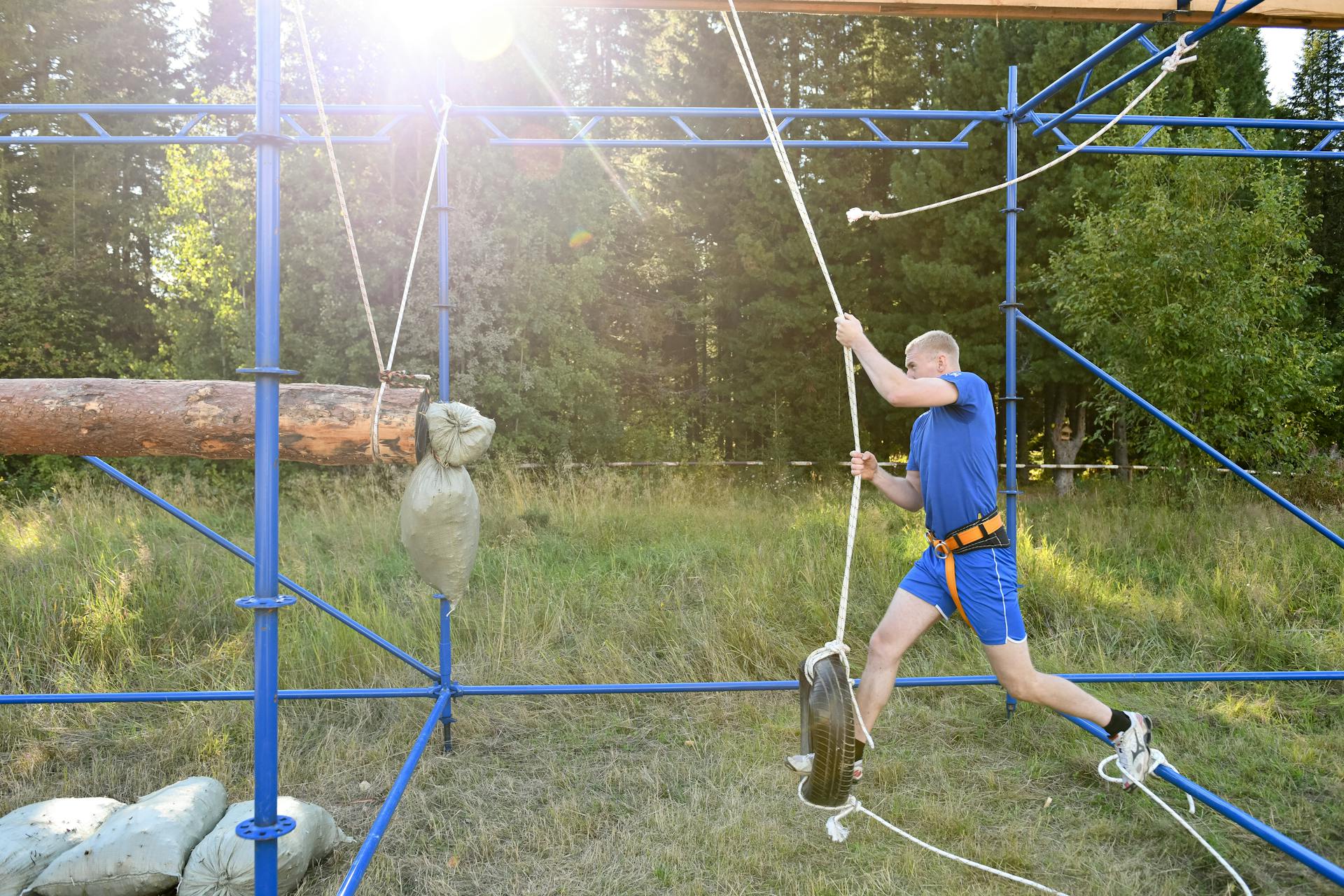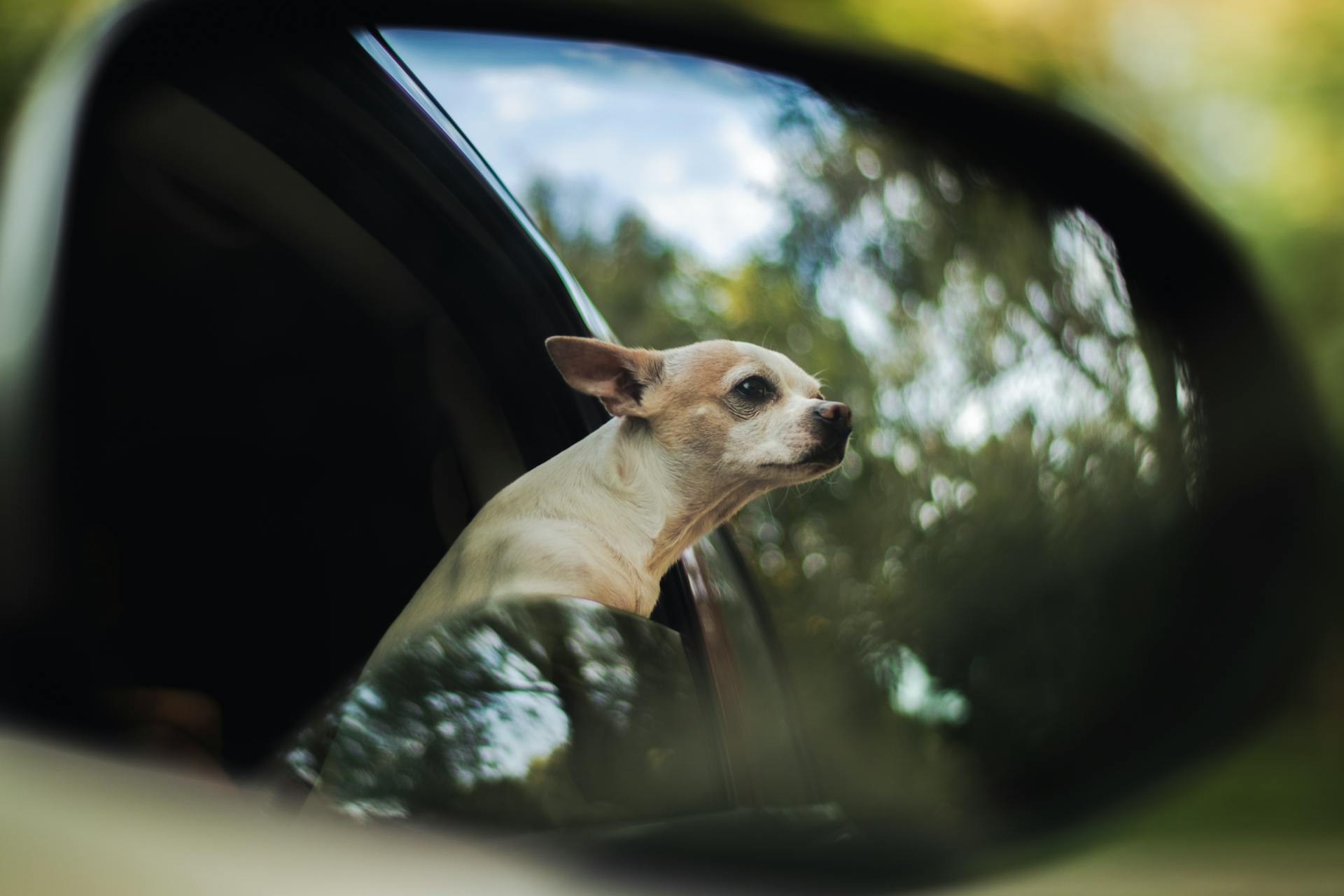
Separation anxiety in dogs can be a real challenge for pet owners, causing destructive behavior, barking, and even accidents in the house. According to studies, up to 14% of dogs suffer from separation anxiety.
Dogs that are left alone for long periods of time are more likely to develop separation anxiety. In fact, dogs that are left alone for more than 4 hours a day are at a higher risk. This is because they are not getting the social interaction and exercise they need.
Preventing separation anxiety in dogs starts with understanding their needs and creating a routine that meets them. By providing mental and physical stimulation, you can reduce the likelihood of separation anxiety.
Readers also liked: Can Bichon Frise Be Left Alone
What Is Separation Anxiety?
Separation anxiety is a clinical diagnosis applied to a variety of behavioral issues that have one thing in common: the dog is left behind by its human. It can present in several different ways, with a range of intensities.
Affected dogs might exhibit their distress by destructive chewing and digging, often at windows, doors, and other exit points.
Urination and defecation are also common symptoms.
Persistent vocalization is another way dogs show their distress.
At least 50% of dogs, and probably more, will exhibit some aspect of separation distress in their lifetimes.
Causes and Risk Factors
Separation anxiety in dogs is a complex issue, and pinpointing the exact cause can be tricky. However, research suggests that some breeds, such as German Shepherds, Belgian Malinois, Australian Shepherds, and Catahoulas, may be more prone to developing separation anxiety.
Traumatic events, like being abandoned or surrendered to a shelter, can also trigger separation anxiety in dogs. If your dog has a history of being abandoned or surrendered, they may rely more heavily on your presence for comfort.
A single traumatic event, such as a house robbery, can also lead to separation anxiety. This is because the dog associates your absence with the traumatic event.
Life changes, like a sudden switch in schedule, a move to a new house, or the sudden absence of a family member, can also contribute to separation anxiety. For example, if your dog's guardian starts working from home but then gets a new job that requires them to leave the dog alone for extended periods, the dog may develop separation anxiety.
A lack of daily exercise has also been linked to separation anxiety in dogs. This is because regular exercise helps to reduce stress and anxiety in dogs.
Here are some common triggers for separation anxiety in dogs:
- Change in residence
- New owner or family
- Changes in household membership
- Schedule changes
These changes can be jarring for your dog, especially if they're not used to being alone. By understanding the potential causes of separation anxiety, you can take steps to prevent it or address it early on.
What Are the Symptoms and Signs
Dogs with separation anxiety exhibit a range of distressing behaviors when left alone. These behaviors can include trembling, salivating, and destructive chewing.
Some common signs of separation anxiety in dogs include pacing, chewing, and digging. These behaviors can result in self-injury, such as broken teeth, cut paws, and damaged nails.
Dogs with separation anxiety may also exhibit anxious behaviors like whining, barking, or howling while their owners are gone or preparing to leave. Excessive barking or howling can be a sign of separation anxiety.
Accidents in the house, such as urination or defecation, can also be a symptom of separation anxiety. Even house-trained dogs may exhibit this behavior.
Dogs with separation anxiety may also show disinterest in eating or drinking when left alone. Some owners have reported their dogs staring at the door, waiting for their return.
Some common symptoms of separation anxiety include:
- Urinating and defecating when left alone
- Barking and howling
- Chewing, digging, and destruction
- Escaping from confinement
- Pacing
- Coprophagia (eating excrement)
Excessive salivation, drooling, or panting can also be a sign of separation anxiety. Desperate and prolonged attempts to escape confinement can be a serious issue.
Diagnosis and Treatment
Diagnosing separation anxiety in dogs requires careful observation and ruling out any underlying medical issues. To confirm a diagnosis, it's essential to videotape or audiotape your dog's behavior when you're away, as a dog with separation anxiety will typically exhibit distress, such as pacing, whining, panting, and restlessness.
Some dogs may exhibit these behaviors due to boredom or attention-seeking, so it's crucial to observe their behavior when you're home to rule out other possibilities. For example, some breeds, like Beagles, are more prone to vocalizing even when nothing is wrong.
To determine a diagnosis, consider the following steps:
- Rule out medical problems by consulting your veterinarian.
- Observe your dog's behavior when you're home to see if they exhibit similar behaviors.
- Determine their normal behavior to understand what's considered normal for your dog.
If your dog is diagnosed with separation anxiety, there are various treatment options available. Medications, such as amitriptyline and alprazolam, can be prescribed to help alleviate symptoms. Natural supplements, like CBD and valerian, may also be effective in reducing anxiety. However, it's essential to consult with your veterinarian before giving your dog any over-the-counter products.
Take a look at this: Healthy Mind Canine - Separation Anxiety Training
Determining a Diagnosis
Determining a diagnosis for separation anxiety in dogs can be a bit tricky, but there are some key signs to look out for.
A dog with separation anxiety will typically exhibit distress behavior when left alone, such as pacing, whining, panting, and restlessness.

To confirm a diagnosis, it's essential to videotape or audiotape your dog when you're away, as this will help you observe their behavior in your absence.
A dog with separation anxiety will often exhibit distress behavior immediately after or within 30 minutes of your departure.
It's also crucial to rule out medical problems that could be mimicking symptoms of separation anxiety.
Here are some common medical conditions that can be mistaken for separation anxiety:
By understanding these potential causes, you can work with your veterinarian to rule out medical issues and determine the best course of treatment for your dog.
Treatment Options
You can work with a professional trainer or behaviorist to help your dog overcome separation anxiety. They can provide guidance on training and behavior modification.
Some vets recommend anti-anxiety medication for severe cases of separation anxiety. This can be used in conjunction with soothing techniques.
Medications like amitriptyline and alprazolam may be prescribed for dogs with separation anxiety. These require a prescription and should be used with caution.

Natural supplements like CBD and valerian can also help alleviate separation anxiety in dogs. However, be sure to consult with your vet before giving your dog any over-the-counter products.
Other options include dog-appeasing pheromone collars or diffusers, compression shirts, and herbal calming supplements or homeopathic treatments.
Here are some treatment options to consider:
- Anti-anxiety medication (prescribed by a vet)
- Natural supplements (CBD, valerian, etc.)
- Herbal calming supplements or homeopathic treatments
- Compression jackets (like Thundershirts)
- Dog-appeasing pheromone collars or diffusers
Managing Separation Anxiety
Developing a management plan for separation anxiety is crucial to prevent the condition from escalating and causing harm to both the dog and the owner. Owners may need to stay at home 7 days a week to avoid unwanted behavior, which can be stressful and impact their daily life.
To encourage independence, provide a safe haven room or area where attention is offered when the dog is calmly sitting or lying down. This area can be used when the owner actually departs, helping the dog to disassociate the safe haven from the owner's presence. Give the dog a food-dispensing toy, such as a Kong toy, to keep them occupied and stimulated.
Readers also liked: Tug of War Toy for Dogs
Implementing a routine is essential in managing separation anxiety. Leave and return home at the same time each day to establish a sense of predictability and comfort for the dog. Keep departures and returns relaxed, avoiding reinforcing the dog's anxiety with your own.
Desensitization to departure cues is a crucial step in treating separation anxiety. Start by introducing repeated exposure to departure cues, such as picking up keys, turning off lights, and donning a coat, while the dog is in a safe haven room or area. Gradually increase the duration of these cues to help the dog disassociate them from actual departures.
To minimize the impact of owner departures, owners should not change noise levels, lights, or gates when leaving. A white noise machine can help muffle outside noises and provide background sound. Minimize owner-dog interactions prior to departure and return to reduce the dog's stress levels.
Positive reinforcement training can be an effective tool in managing separation anxiety. Never punish your dog for separation anxiety behaviors, as punishment can increase anxiety. Instead, use positive reinforcement techniques to tire out your pup before leaving and neutralize anxiety triggers.
Take a look at this: A Guide to Managing Healthy Weight in Your Dog This Summer
Training and Prevention
Training and prevention of separation anxiety in dogs requires a thoughtful approach. Positive reinforcement training can be a valuable tool to tire out your pup before leaving the house, and a certified professional dog trainer can help neutralize anxiety triggers using positive training techniques.
Removing special toys and treats that are only accessible when you're away can help your dog associate time alone with positive experiences. Be sure to remove these special items as soon as you return home.
Crate training can be a helpful short-term solution to keep your pup safe while you teach them to enjoy being alone, but it's not a permanent fix. Some dogs feel safer and more comfortable in their crate, while others might panic, so it's essential to monitor their behavior.
Developing independence by teaching your pup to be on their own in another room, even when you're home, can help prevent overly dependent behavior. Keeping a calm demeanor when you leave or return home is also crucial.
For your interest: Positive Dog Training
Positive Reinforcement Training
Positive reinforcement training is a game-changer for dogs with separation anxiety.
Punishment isn't effective for treating separation anxiety and can actually increase anxiety.
A certified professional dog trainer can help you neutralize anxiety triggers using positive training techniques.
Locate a professional dog trainer near you to get started.
To start, try positive reinforcement training to tire out your pup before you leave.
This can help reduce anxiety and make the separation process easier for both you and your dog.
You can also use positive reinforcement training to teach your dog to calm down and relax when you're away.
Separation anxiety isn't the result of disobedience or lack of training.
In fact, it's a serious condition that requires a gentle and patient approach.
By using positive reinforcement training, you can help your dog feel more secure and confident when you're away.
It's also essential to remove special toys and treats as soon as you return home.
For your interest: Shock Collar Pet Trainer
This will help your dog associate these items with being alone, rather than with your return.
Remember, every dog is different, and what works for one dog may not work for another.
But with patience, consistency, and positive reinforcement training, you can help your dog feel more calm and secure when you're away.
A unique perspective: Will Spaying Dog Stop Aggression
Socialization
Socialization is key to reducing your puppy's risk of developing anxiety. Once they've received their puppy vaccines, take them on a walk in your neighborhood or hit the park.
Making outdoor excursions a habit gives your puppy something to look forward to and a positive way to use their energy. This can help alleviate boredom and reduce their risk of developing separation anxiety.
If you work outside of the home for most of the day, consider a doggy daycare or a dog sitter. This way, your puppy can socialize and exercise with other dogs in a safe environment.
With time and consistency, you can make a big change in your dog's well-being.
What to Do If Your Hair
If your hair is falling out due to stress, it's not uncommon for dogs to experience similar physical symptoms.
Dogs with separation anxiety may exhibit excessive grooming habits, leading to hair loss or thinning.
Some dogs may even develop skin problems due to excessive licking or chewing caused by anxiety.
In extreme cases, dogs with separation anxiety may even ingest their own hair, which can lead to digestive issues.
If you suspect your dog is experiencing separation anxiety, it's essential to seek professional help from a veterinarian or a certified animal behaviorist.
Related reading: Dogs Hair Standing up and Tail Wagging
Frequently Asked Questions
How do you leave a dog with separation anxiety home alone?
Provide a long-lasting chew or interactive toy to keep your dog occupied when you're away, and make sure they enjoy using it when you're present
How do you stop separation anxiety in dogs?
Provide your dog with engaging activities and long-lasting chews, such as stuffed Kongs or treat balls, to keep them occupied when you're away. This can help reduce separation anxiety and make your dog feel more secure.
Can separation anxiety in dogs be cured?
Separation anxiety in dogs can be managed and reduced with behavior modification and medication, but it's not necessarily a "cure" in the classical sense. With the right approach, owners can help their dogs learn to cope with being alone.
What can you give dogs for separation anxiety?
For canine separation anxiety, two FDA-approved options are clomipramine (Clomicalm) and fluoxetine (Prozac), which are typically used to treat depression and anxiety in humans. Consult a veterinarian to determine the best treatment for your dog's separation anxiety.
Do dogs get depressed when you go on vacation?
Dogs can experience separation anxiety and feelings of loss when their owners leave for vacation, which may be misinterpreted as depression. However, it's essential to understand their emotional needs and take steps to alleviate their stress and provide a sense of comfort while you're away.
Sources
- https://www.humanesociety.org/resources/separation-anxiety-dogs
- https://todaysveterinarypractice.com/behavior/on-your-best-behavior-canine-separation-anxiety/
- https://www.akc.org/expert-advice/training/dog-separation-anxiety/
- https://betterpet.com/dog-separation-anxiety/
- https://www.aspca.org/pet-care/dog-care/common-dog-behavior-issues/separation-anxiety
Featured Images: pexels.com


